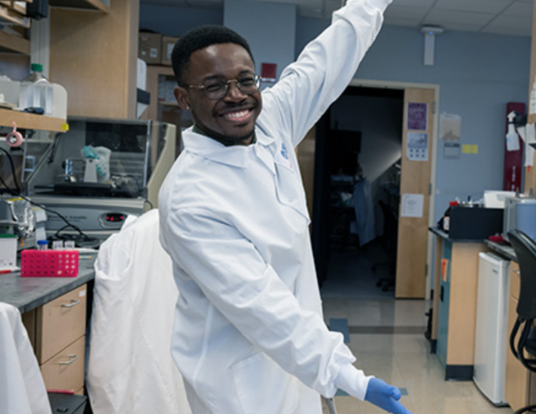Light Speed on the Information Superhighway
Nanoscale photonic technologies could make data transmission faster and more sustainable
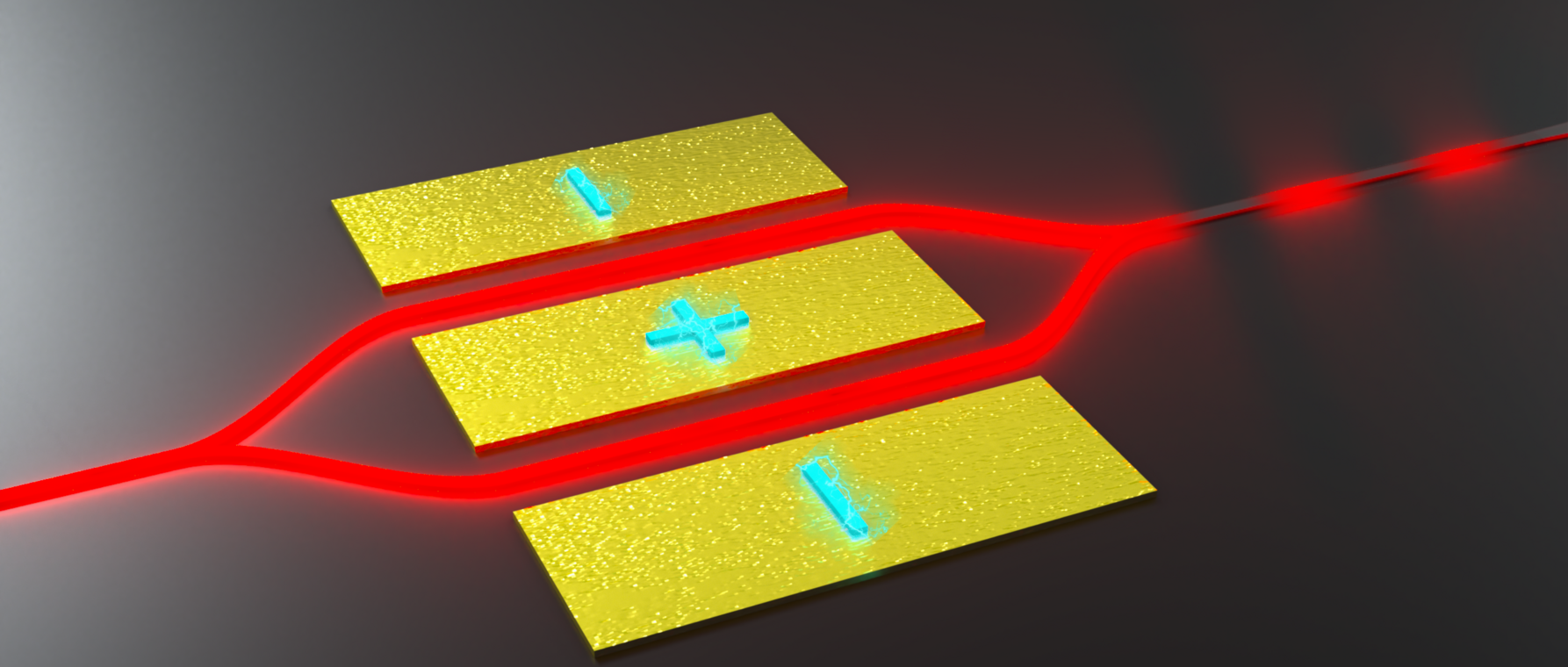
Research at Risk: Since World War II, universities have worked with the federal government to create an innovation ecosystem that has yielded life-changing progress. Now much of that work may be halted as funding is withdrawn. Find out more about the threats to medical, engineering, and scientific research, as well as how Harvard is fighting to preserve this work—and the University's core values.
The data generated annually grows exponentially as users continue to collect, communicate, and process more information using computer systems. Also growing are the energy demands of these processes. A single query using an artificial intelligence client, for example, has been found to consume 5 to 10 times more energy than conventional search engines. Meeting this growing demand requires the development of technologies to make data handling more sustainable.
“The ways we create data are exploding,” says 2024 Harvard Horizons Scholar Dylan Renaud, who graduates with a PhD in applied physics this May. “When it comes to meeting global data demand, we can’t just increase the power consumption of our data centers indefinitely. We need devices that can operate faster and that are more energy efficient.”
As a PhD candidate in applied physics at the Harvard Kenneth C. Griffin Graduate School of Arts and Sciences (GSAS) and the John A. Paulson School of Engineering and Applied Sciences (SEAS), Renaud has developed new technologies that respond to the critical need for quicker, more sustainable data transmission. His 2024 Harvard Horizons project, “Nanoscale Photonics: The Power of Tiny Devices for Solving the World’s Largest Challenges,” combines research in the emerging field of nanoscale photonics––how light interacts with very small objects––with practical computing applications to create novel devices that move information via light. This hardware, Renaud says, will be crucial as the amount of data in the world continues to expand rapidly.
Better and Faster
As part of his PhD research, Renaud has developed short-wavelength integrated photonic circuits in thin-film lithium niobate. His devices contain features as much as a hundred times smaller than the thickness of human hair. “These tiny devices allow us to route light inside them,” he says,“ and also interact very energy-efficiently with that light to change its color or turn it on and off very quickly. Those kinds of operations are foundational to the way that we send information around the world today.”
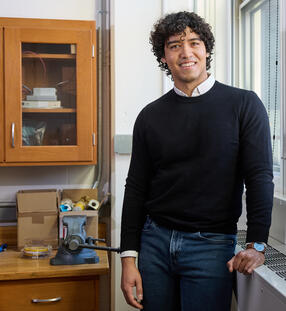
There are distinct advantages to using light as an information carrier when transferring data between points on a computer network. One of the most important is signal loss. When information is moved from one place to another using an electric current, for instance, that current interacts with the transmitting material in ways that significantly weaken the signal. Light, however, only weakly experiences transmission loss.
“I can store information in light, for example, by varying its intensity,” Renaud says. “I can send it wherever I want and that information is essentially preserved. Furthermore, with optical signals, I can send many different colors of light along a channel with information encoded in each color—meaning, I can send more information per unit time—without additional loss or cross-talk of the light.”
Though Renaud draws on these general advantages of using light as an information carrier, his specific contributions to the field have involved designing and manufacturing small-scale modulators, devices that manipulate properties of light such as its phase or intensity. “Dylan has made exceptional contributions to optical modulators, or rapid information switches, that are compact enough to be compatible with the electronic circuitry on computer chips in current use and are also efficient and can operate at very high speeds,” explains Evelyn Hu, the Tarr-Coyne Professor of Applied Physics and Electrical Engineering at Harvard and a collaborator on Renaud’s research.
Dylan has made exceptional contributions to optical modulators, or rapid information switches, that are compact enough to be compatible with the electronic circuitry on computer chips in current use and are also efficient and can operate at very high speeds.
—Professor Evelyn Hu
Hu notes that Renaud’s work with lithium niobate chips has entailed “strategic modeling and design of the devices” as well as careful implementation of nanofabrication techniques. Through this work, the Horizons scholar has been able to design devices that are smaller and demonstrably more power-efficient than conventional technologies, which is important given the world’s rapidly increasing usage of data––and its associated material, energy, and environmental costs.
Finally, Renaud notes that this technology is not just limited to impacting our modern-day data infrastructure. In particular, he emphasizes that the ability to control light’s properties energy-efficiently and with very little loss is also important for enabling next-generation technologies such as quantum computing. “Some of the leading quantum computing technologies are based on using light as your carrier of quantum information, called qubits,” he says. Quantum computing approaches that rely on photons—quanta of light—can benefit from Renaud’s devices, since the ability to control a photon’s properties with little loss of signal is crucial for scaling up the technologies.
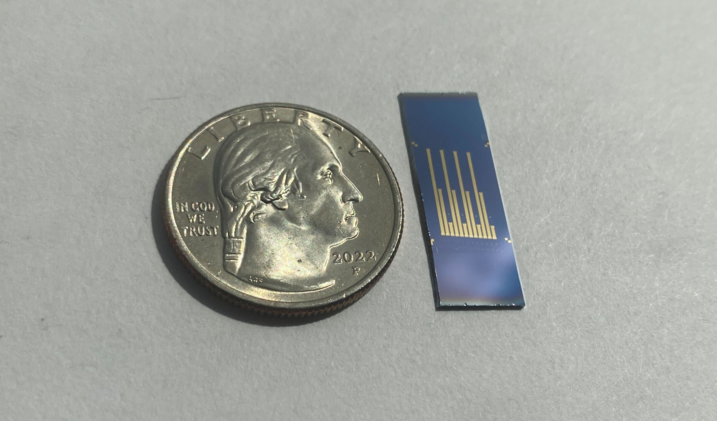
From Homeschooled to Harvard
As a high schooler, Renaud didn’t know for sure that he would eventually want to work in science––or even that he would attend college. But in retrospect, Renaud says he can trace his skills and curiosity back to his family upbringing. “My whole story in the sciences started in a suburb in New Jersey,” Renaud reflects. “I was homeschooled by my mother, along with my five brothers. When I look back at that, I realize that that was a really seminal experience mainly because my parents dedicated a lot of effort toward teaching us how to learn on our own, take initiative in our work, and problem-solve. It turns out these are the same skills that are valuable in doing a PhD and doing independent research.”
The emphasis on active, individualized learning in a homeschool setting also enabled Renaud to delve into specific areas of interest, he says, through homeschool class projects, special topics taught in a multifamily homeschool cooperative, and community college coursework in his later high school years. “I first got interested in the ‘sciences of the small’––nanoscale sciences––during high school,” he recalls, “and it was more of a cursory interest then. I was reading books in the library about it. I didn’t really consider it as something I would do in the future.”
An offer of a full scholarship for college at the New Jersey Institute of Technology encouraged Renaud to enroll there for a bachelor’s degree, which led him to study physics––and to work on nanoscience research projects in labs in the US and abroad. As a summer participant in the NanoJapan undergraduate research internship program, Renaud began to feel more strongly about pursuing nanoscience research. “We were living in Okinawa and working very long hours, but it was also very fun. I would say that experience steered me toward realizing what I’m really interested in exploring more,” he says.
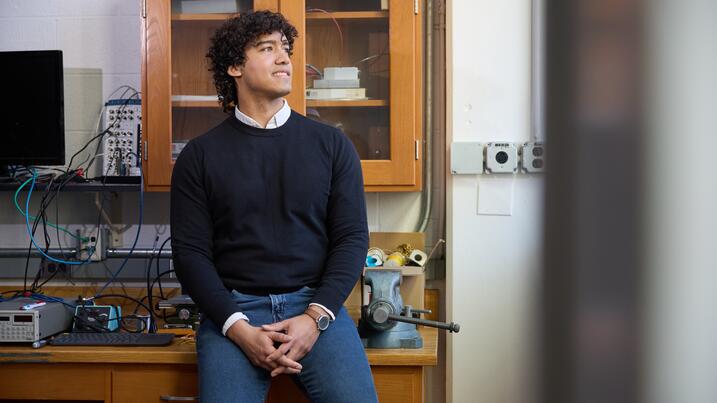
Coming to Harvard for his PhD and joining the Laboratory for Nanoscale Optics, headed by Tiantsai Lin Professor of Electrical Engineering and Applied Physics Marko Lončar, led Renaud to his current interest in working on developing devices that combine nanoscale materials with light and with important practical applications. While quantum computing concepts and technologies have been the topic of substantial theoretical and academic research in recent years, Renaud says his work in Professor Lončar’s group has made him hopeful for broader real-world uses of the integrated photonic circuit technologies that he and other members of the research group are developing.
“There are now more and more startups that focus on this technology, integrated photonic circuits, for things like communications and data centers. Also, people are looking at using this for more exploratory technologies, like helping develop quantum computing or enabling things like virtual reality,” Renaud says. (Professor Lončar himself is a co-founder of one such startup, called HyperLight, that makes some of the research group’s lithium niobate devices commercially available.) “My hope is that this technology is actually used in the world and that it’s not just relegated to papers within academia. We can do measurements in the lab and see that our device is nominally more efficient than what is commercially available––but at the end of the day, none of that matters unless our technology is actually used. These devices could offer solutions to some of the world’s biggest challenges.”
Get the Latest Updates
Join Our Newsletter
Subscribe to Colloquy Podcast
Simplecast




